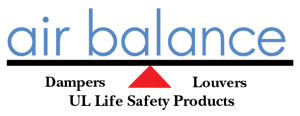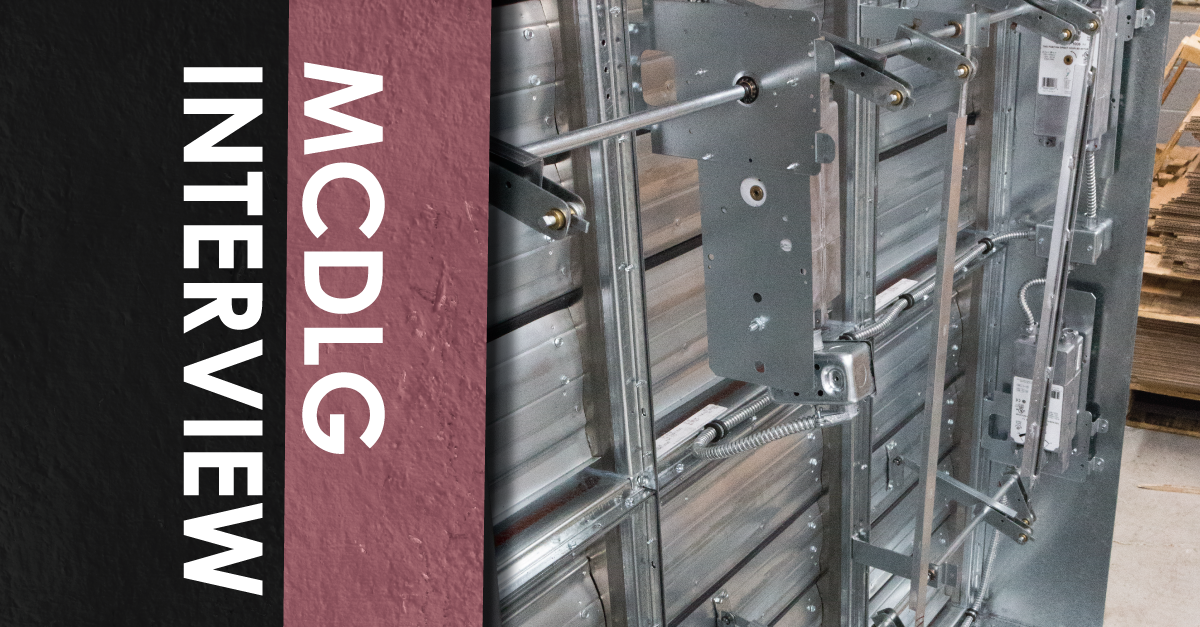We discuss the NFPA 2018 Conference and UL Life Safety dampers with Greg Crosby, VP of Sales for Air Balance and MCDLG.

Air Balance is heading to the NFPA 2018 Conference and Expo, one of the world’s biggest and most comprehensive events for fire, electrical, and life safety. The NFPA Conference is an opportunity to gain valuable insight on the Life Safety industry, to meet with industry professionals, and to learn about the latest products and solutions for fire safety.
As you know, Air Balance is a provider of HVAC and UL Life Safety solutions. We spoke with Greg Crosby, vice president of Sales for Air Balance and MCDLG, to get his take on the annual NFPA conference, as well as some advice on UL Life Safety Dampers.
Greg has provided HVAC and air flow regulation equipment for the construction industry since 1976. He joined MCDLG in 2006, as VP of Sales, to support Air Balance. Greg knows the ins and outs of UL Life Safety dampers, such as fire dampers and smoke dampers.
Listen to the interview below:
NFPA 2018 Interview from Brian Crosby on Vimeo.
What do you see as the greatest benefit of attending the NFPA Conference for this industry?
Greg: When you attend the NFPA, you will learn that there are two parts to an effective fire suppression system. There is the active system, which consists of sprinklers and fire extinguishers – things that put out the fire or slow its progress. Then, there is the passive system. A passive system prevents either smoke or fire, or both, from passing through parts of the building, using UL-rated fire barriers and Life Safety dampers.
At Air Balance, we deal with the passive fire suppression system. Specifically, we manufacture the fire dampers, smoke dampers, and combination fire/smoke dampers that go into the passive fire suppression system.
Let’s say I’m an engineer who needs UL Life Safety products. What can I learn by attending the NFPA 2018 Conference?
Greg: You will see the various parts that make up the active and the passive fire suppression system. Likely, you’re going to see a lot more things for active systems on the Expo floor. Sprinklers are popular for active systems. Studies show that a sprinkler has a 95% chance to activate in a fire and puts out the fire 96% of the time.
However, you need a passive fire suppression system working with the active system for those times when the sprinkler does not activate. In many building codes, passive fire suppressors are required like fire barriers and smoke containment systems. Fire, fire-smoke, and smoke dampers make up those components of the passive system.
What are some things an engineer should consider when choosing a fire damper?
Greg: When you have a penetration through a UL-approved fire barrier, you need a fire damper installed in that penetration. The fire damper prevents fire from spreading through the penetration, preventing the fire from spreading from one side of the fire barrier to the other. Fire dampers can be static or dynamic. Dynamic fire dampers can close while air is moving through the duct whereas a static damper only works when there is no air flow in the duct .
During a fire, your fans might continue pushing air through the duct work. There are few reasons why you would want this. In this case, dynamic fire dampers are important. Every fire damper is rated for a period: either 1½ hours or 3 hours. This rating shows how long the damper will remain intact during a fire event. Each rating must coincide with the fire barrier’s rating. A two-hour rated fire barrier requires a 1½ hour rated fire damper, while a 4-hour fire barrier requires a 3-hour rated fire damper.
What should an engineer consider when choosing a fire-smoke damper?
Greg: Combination fire-smoke dampers prevent both fire and smoke from spreading through the fire barrier. So, you need to consider all the same things that you did with fire-only dampers, plus a few more things for the smoke portion of the damper. Combination fire-smoke dampers must adhere to both sets of standards. That’s one reason why they are so popular.
Each smoke damper will have a temperature rating of either 250°F or 350°F. This rating relates to the air temperature in the duct work during a fire. The damper must be able to withstand the rated temperature and reopen after the temperature is reached. Smoke dampers also carry an air leakage rating, from class one to class three. Class one is the best rating, because it allows the least amount of air through the closed damper. Generally, most smoke dampers or combination fire-smoke dampers are class one or class two.
On top of that, smoke dampers also have an operational rating; or a maximum velocity and maximum static pressure at which the damper will operate. In other words, the damper is rated to close at the static pressure and velocity that is in the duct in which it operates. If the smoke damper has a lower rating than the static pressure or velocity in the duct, it may not close during a fire event.
In certain cases, you may need the smoke damper to re-open to allow for smoke evacuation from the building. You should ask the manufacturer if the damper model you have selected allows for the damper to be reopened.
What does Air Balance offer in terms of UL Life Safety products?
Greg: Air Balance offers Fire, Smoke, and Combination Fire-Smoke dampers, along with various accessories for each type of damper. All of our Life Safety dampers are UL rated for their intended purpose and carry all the necessary ratings. We also offer ceiling radiation dampers for ceiling penetrations, to prevent the spread of radiant heat from above the ceiling to below the ceiling, and to allow the occupants to egress the area.
You can also go online and take our continuing education course on UL Life Safety dampers. We offer this course, free of charge, through AEC Daily. You can go to AECDaily.com and search for Air Balance, or use the link provided at the bottom of this interview article.
What other services does Air Balance provide to customers?
Greg: Air Balance provides high-quality HVAC products at competitive prices, including control dampers, louvers, and rooftop products. We also offer a variety of expedited delivery options for each product group. We invite you to take a balanced approach to your next construction project and choose Air Balance for your requirements.
Special thanks to Greg Crosby for taking part in this interview. As a reminder, Air Balance will be heading to the Mandalay Bay Convention Center for the NFPA 2018 Conference and Expo, June 11th to June 14th. Air Balance will be located at booth 1865. We hope to see you there.
And don’t forget: Air Balance offers an online continuing education course on UL Life Safety dampers, hosted by AEC Daily. Learn the basics of UL Life Safety dampers and what to consider when choosing the right one for the job.
This self-paced course is free to take and takes about an hour to complete. It offers continuing education credits from institutions, including ASHRAE and AIA.
You can also sign up to receive a Live Learning session, taught by industry professionals from MCDLG. Live Learning sessions are free to sign up for and attend and offer the same continuing education credits and benefits of our online course. Take our UL Life Safety course on your terms.
Click this button to sign up and get started.
.webp?width=91&height=70&name=MCDLG%20Logo%20(Resize).webp)






